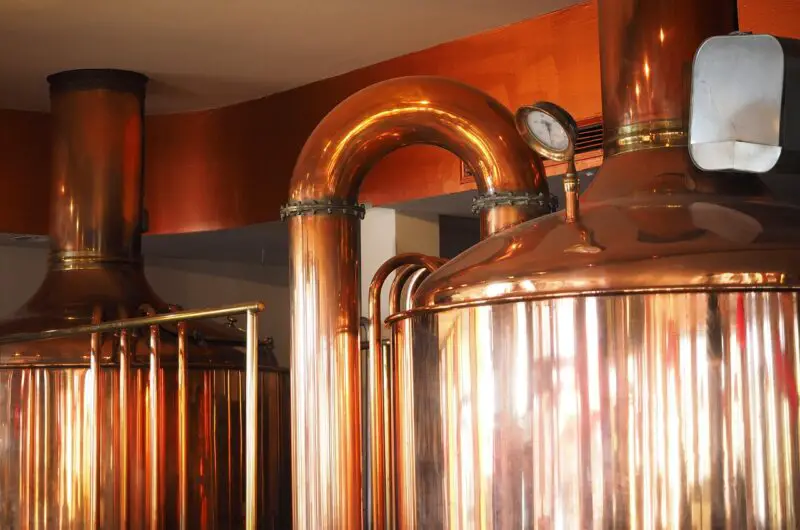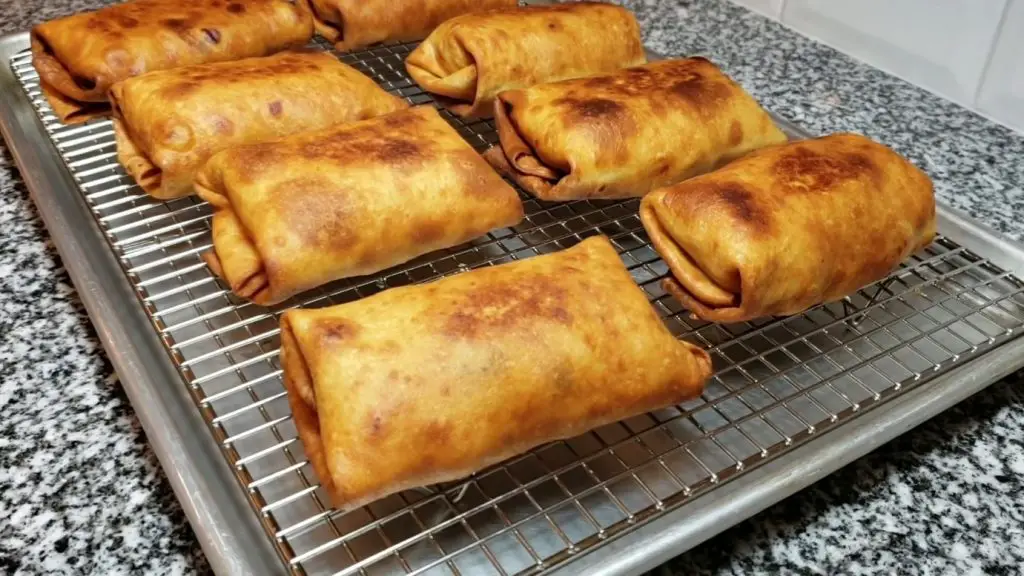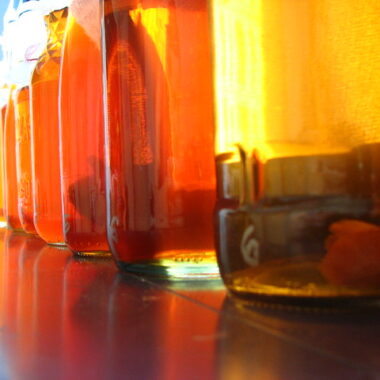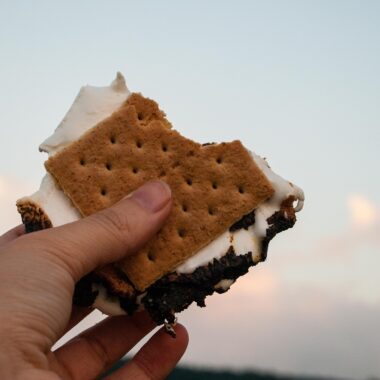Kombucha is a fermented tea beverage packed with probiotics, antioxidants, and a deliciously tangy flavor. Brewing your own kombucha at home is a rewarding process that allows you to control the ingredients, flavors, and fermentation time. This guide will take you through every step of the brewing process, from gathering supplies to bottling and flavoring your homemade kombucha.
What is Kombucha?
Kombucha is a fermented drink made from sweetened tea and a symbiotic culture of bacteria and yeast (SCOBY). The fermentation process produces beneficial probiotics, organic acids, and a small amount of alcohol, giving kombucha its signature tangy taste and effervescence.
The Basics of Brewing Kombucha
Before we get into the step-by-step process, let’s go over some essential information about brewing kombucha.
Ingredients Needed
- Tea – Black tea is the most common, but green tea and oolong tea can also be used.
- Sugar – White cane sugar is ideal for fermentation.
- Water – Filtered, non-chlorinated water is recommended.
- SCOBY (Symbiotic Culture of Bacteria and Yeast) – This is the essential culture that ferments your tea.
- Starter Tea – This is already fermented kombucha, used to kickstart the fermentation.
Supplies Needed
- Large glass jar (1-gallon or more)
- Clean cloth or coffee filter
- Rubber band
- Wooden spoon
- pH test strips or a pH meter (optional)
- Glass bottles with airtight lids (for bottling)
Step 1: Prepare the Sweet Tea Base
The first step in brewing kombucha is making a sweet tea base that will provide nutrients for fermentation.
Instructions:
- Bring 4 cups of filtered water to a boil in a pot.
- Remove from heat and add 4–6 tea bags (or about 2 tablespoons of loose-leaf tea).
- Let the tea steep for 5–10 minutes, then remove the tea bags.
- Stir in 1 cup of white sugar until completely dissolved.
- Add 12 more cups of filtered water to cool the tea to room temperature.
Step 2: Add the SCOBY and Starter Tea
Once the tea has cooled to room temperature, it’s time to introduce the SCOBY.
Instructions:
- Pour the cooled tea into a clean 1-gallon glass jar.
- Add 2 cups of starter tea (previously brewed kombucha).
- Gently place the SCOBY on top. It may float, sink, or rest sideways – all are normal.
- Cover the jar with a breathable cloth or coffee filter and secure it with a rubber band.
Step 3: First Fermentation (7–14 Days)
This is the primary fermentation stage, where the SCOBY works its magic.
Instructions:
- Place the jar in a warm, dark, and ventilated area (between 68–78°F).
- Allow the kombucha to ferment for 7–14 days.
- Taste test after a week using a clean straw. If it’s too sweet, let it ferment longer.
Signs of Fermentation:
- A new baby SCOBY forming on the surface.
- The tea becomes tangy and slightly effervescent.
- A mild vinegar smell (a sign of a healthy fermentation).
Step 4: Bottling and Second Fermentation
Once your kombucha reaches the desired tanginess, it’s time to bottle it for carbonation.
Instructions:
- Remove the SCOBY – Use clean hands to remove the SCOBY and set it aside.
- Reserve Starter Tea – Keep 2 cups of kombucha for your next batch.
- Strain and Bottle – Pour the fermented kombucha into airtight glass bottles, leaving about an inch of space at the top.
Flavoring Options (Optional)
If you want flavored kombucha, add ingredients like:
- Fruit juice (½ cup per bottle)
- Fresh fruit (berries, citrus slices)
- Herbs & Spices (ginger, mint, cinnamon)
Step 5: Second Fermentation (3–7 Days)
This step enhances carbonation and allows flavors to develop.
Instructions:
- Store the sealed bottles at room temperature for 3–7 days.
- “Burp” the bottles daily by opening them slightly to release pressure.
- After the desired carbonation is reached, refrigerate the bottles to slow fermentation.
Step 6: Enjoy Your Homemade Kombucha!
Your kombucha is now ready to drink! Serve it chilled and enjoy its refreshing, probiotic-rich benefits.
Troubleshooting Common Kombucha Issues
| Problem | Cause | Solution |
|---|---|---|
| No carbonation | Bottles not sealed properly | Use airtight bottles like flip-top glass bottles |
| Too vinegary | Over-fermented | Reduce fermentation time |
| Mold on SCOBY | Contaminated batch | Discard SCOBY and tea, start fresh |
| SCOBY sinks | Normal occurrence | No action needed |
How to Store and Maintain a SCOBY
A healthy SCOBY can be reused indefinitely. Store it in a glass jar with 2 cups of starter tea in the fridge between batches.
Health Benefits of Kombucha
Drinking kombucha regularly may offer the following benefits:
- Improved digestion (due to probiotics)
- Boosted immunity (rich in antioxidants)
- Detoxification (supports liver function)
- Increased energy (contains B vitamins and organic acids)
Brewing kombucha at home is a simple, cost-effective way to enjoy this probiotic powerhouse. By following these steps, you can experiment with different teas, flavors, and fermentation times to create the perfect kombucha that suits your taste.
Now that you have all the tools and knowledge, get started on your first batch of homemade kombucha today! 🚀
Advanced Tips for Brewing Kombucha
Now that you’ve mastered the basics, let’s explore some advanced techniques to refine your brewing process, experiment with flavors, and troubleshoot challenges that may arise.
1. Choosing the Right Tea for Brewing Kombucha
While black tea is the most common choice for kombucha, experimenting with different types of tea can yield unique flavors and benefits.
Best Teas for Kombucha:
✅ Black Tea: Provides the most robust fermentation and flavor.
✅ Green Tea: Lighter, more delicate taste with slightly less caffeine.
✅ Oolong Tea: A mix between green and black tea, offering complexity.
✅ White Tea: Milder, sweeter taste but requires a longer fermentation.
Teas to Avoid:
❌ Flavored Teas (like Earl Grey): Often contain oils that can harm the SCOBY.
❌ Herbal Teas (like chamomile): Lacks the necessary nutrients for fermentation.
❌ Decaffeinated Tea: May not support the SCOBY as effectively.
Pro Tip: If you want to use herbal teas for flavor, add them during the second fermentation instead of the primary brew.
2. Understanding the pH of Kombucha
A key part of fermentation is monitoring acidity. Kombucha should maintain a pH between 2.5 and 3.5 for safety and taste.
🔹 Too high (above 4.0): Increases the risk of harmful bacteria.
🔹 Too low (below 2.5): Can become too acidic to drink.
You can test your kombucha’s pH using pH test strips or a digital pH meter.
3. Kombucha Fermentation Timeline and Taste Profile
| Fermentation Time | Taste Profile |
|---|---|
| 3–5 days | Very sweet, low acidity |
| 7–10 days | Balanced, mildly tangy |
| 12–14 days | More tart, slightly carbonated |
| 14+ days | Strongly vinegary, high acidity |
Pro Tip: If your kombucha is too sour, shorten fermentation time on the next batch. If too sweet, let it sit longer.
4. Creating a Stronger Carbonation
Do you want more fizz in your kombucha? Here’s how to maximize carbonation during the second fermentation:
✅ Use Airtight Bottles – Swing-top glass bottles are the best for trapping CO₂.
✅ Add Natural Sugars – Fruits, honey, and cane sugar fuel carbonation.
✅ Keep at Warm Temperatures – Ferment bottles at 75–80°F (24–27°C) for better bubbles.
✅ Burp Carefully – If pressure builds too much, open bottles slowly to release excess gas.
🚨 Warning: Over-carbonation can cause bottle explosions! Always check your bottles daily.
5. Flavoring Ideas for Second Fermentation
Once you’ve mastered the base kombucha, it’s time to experiment with flavors.
Fruity Flavors:
🍓 Berry Bliss: Strawberries, blueberries, raspberries
🍊 Citrus Burst: Orange, lemon, lime
🍍 Tropical Punch: Pineapple, mango, passion fruit
Spicy & Herbal Flavors:
🌿 Ginger Zing: Fresh ginger slices
🌱 Minty Fresh: Mint leaves, cucumber
🍯 Turmeric & Honey: Anti-inflammatory and naturally sweet
Floral & Exotic Flavors:
🌸 Lavender Lemonade: Lavender buds + lemon
🌺 Hibiscus Breeze: Hibiscus tea + pomegranate
Pro Tip: Add 1–2 tablespoons of fresh fruit juice or 1–2 teaspoons of grated ginger per bottle for extra flavor.
6. Scaling Up Your Kombucha Brewing (Continuous Brew Method)
If you want a never-ending supply of kombucha, consider the Continuous Brew Method, where you keep your SCOBY in a large jar and draw fresh kombucha while constantly replenishing the tea.
How It Works:
1️⃣ Brew a large batch of sweet tea.
2️⃣ Add it to your brewing vessel with an existing batch of kombucha.
3️⃣ Every few days, remove some finished kombucha and replace it with fresh tea.
This method reduces the need to clean the jar frequently and speeds up fermentation.
7. Kombucha and Alcohol Content
Did you know that kombucha naturally contains a small amount of alcohol?
✔️ Most homebrewed kombucha has 0.5%–1.5% alcohol due to fermentation.
✔️ If you let it ferment longer, the alcohol content can increase.
✔️ To reduce alcohol, store it in the fridge and limit the second fermentation.
8. Troubleshooting Kombucha Problems
| Problem | Cause | Solution |
|---|---|---|
| Mold growing on SCOBY | Contamination or weak acidity | Discard batch, sanitize equipment, and restart with fresh starter tea. |
| Kombucha too sweet | Under-fermented | Let it sit longer and taste-test every day. |
| Kombucha too sour | Over-fermented | Reduce fermentation time or dilute with fresh tea. |
| Flat kombucha | Bottles not sealed properly or no sugar for secondary fermentation | Use airtight bottles and add a bit of sugar or fruit juice before bottling. |
9. Storing and Sharing Kombucha
✅ Refrigerate Bottled Kombucha: Stops fermentation and preserves carbonation.
✅ Use a SCOBY Hotel: Store extra SCOBYs in a jar with starter tea for future use.
✅ Gift Kombucha to Friends: Share bottles of homemade kombucha with new flavors.
10. FAQs About Brewing Kombucha
Q: How long does it take to brew kombucha?
A: The first fermentation takes 7–14 days, while the second fermentation for carbonation takes 3–7 days.
Q: Can I reuse my SCOBY?
A: Yes! A SCOBY can last for many batches. Just keep it in starter tea when not in use.
Q: What if my SCOBY changes color?
A: A darker color is normal. However, if you see fuzzy mold, discard it immediately.
Q: How much kombucha should I drink per day?
A: Start with 4–8 ounces per day to allow your body to adjust. Too much may cause digestive upset.
Final Thoughts on Brewing Kombucha
Brewing kombucha is an exciting and rewarding process that allows you to experiment with different flavors, control fermentation times, and reap the health benefits of probiotics. By following the step-by-step guide, troubleshooting issues, and trying out new flavors, you’ll become a kombucha expert in no time!
So why not start your first batch today? Let the fermentation begin! 🧪🍹


















